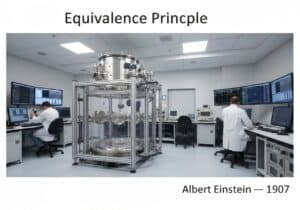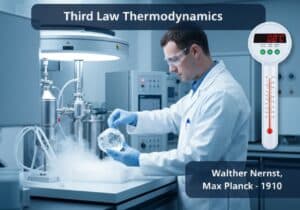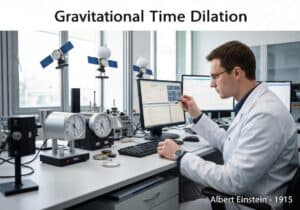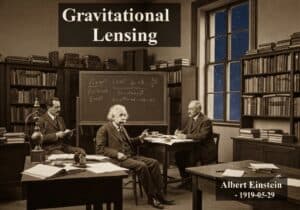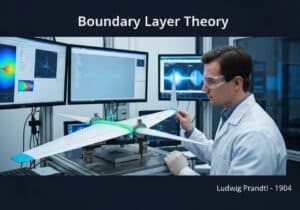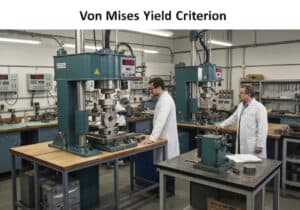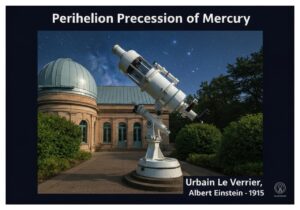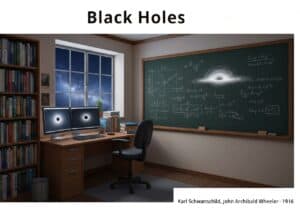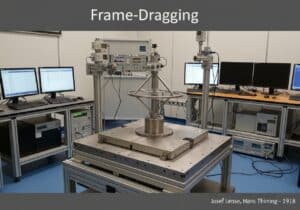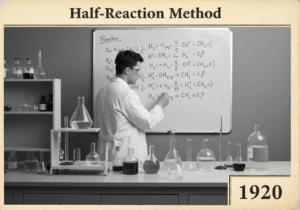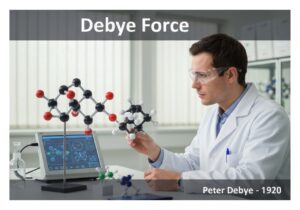The Einstein Field Equations (EFE) are a set of ten coupled, non-linear partielles Differential equations that form the core of general relativity. They describe the fundamental interaction of gravitation as a result of spacetime being curved by matter and energy. The equation is concisely written as [latex]G_{\mu\nu} + \Lambda g_{\mu\nu} = \frac{8\pi G}{c^4} T_{\mu\nu}[/latex], relating spacetime geometry to its energy-momentum content.
Einstein-Feldgleichungen
- Albert Einstein
- David Hilbert
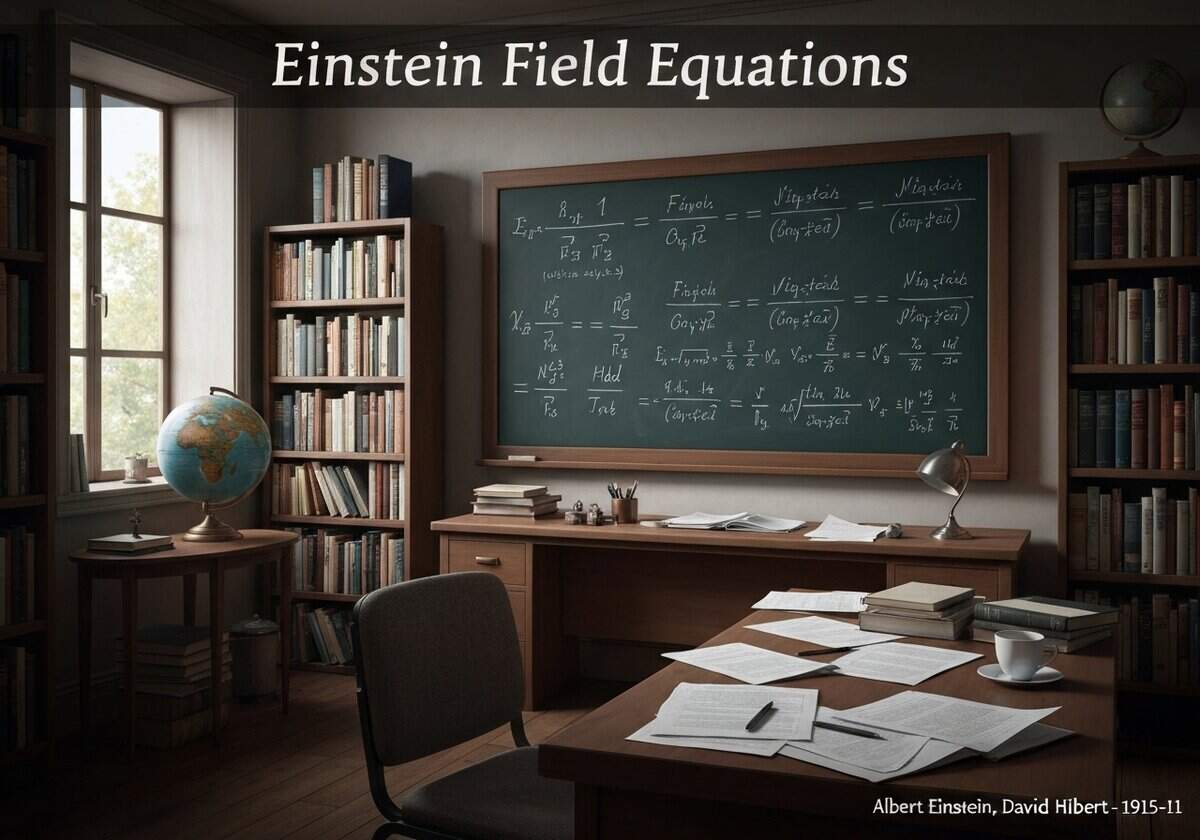
These equations are the mathematical foundation of general relativity. In the equation [latex]G_{\mu\nu} + \Lambda g_{\mu\nu} = \kappa T_{\mu\nu}[/latex], the left side represents the geometry of spacetime, while the right side represents the matter and energy content within it. The Einstein tensor, [latex]G_{\mu\nu}[/latex], is a specific combination of the Ricci tensor and the scalar curvature, which are derived from the metric tensor [latex]g_{\mu\nu}[/latex]. The metric tensor itself defines all geometric properties of spacetime, such as distance, volume, and curvature. The term [latex]\Lambda[/latex] is the cosmological constant, originally introduced by Einstein to allow for a static universe and now associated with dark energy and cosmic acceleration.
On the right side, the stress-energy tensor, [latex]T_{\mu\nu}[/latex], is a mathematical object that describes the density and flux of energy and momentum in spacetime. It acts as the source of the gravitational field, analogous to how mass is the source of gravity in Newton’s theory. The constant [latex]\kappa = \frac{8\pi G}{c^4}[/latex] is the Einstein gravitational constant, which ensures that the theory’s predictions match Newtonian gravity in the weak-field, low-velocity limit.
Solving these equations is notoriously difficult due to their non-linear nature. The equations show that matter tells spacetime how to curve, and curved spacetime tells matter how to move. This feedback loop is the source of the non-linearity. Only a handful of exact analytical solutions are known, such as the Schwarzschild solution for a spherical mass (a Schwarzes Loch) and the Friedmann–Lemaître–Robertson–Walker (FLRW) metric for a homogeneous, isotropic universe, which forms the basis of modern cosmology.
Typ
Unterbrechung
Verwendung
Vorläufersubstanzen
- Newton’s law of universal gravitation
- Spezielle Relativitätstheorie
- Riemannian Geometrie
- Tensorrechnung
Anwendungen
- Kosmologie
- Physik schwarzer Löcher
- Gravitationslinsenberechnungen
- Vorhersage von Gravitationswellen
- GPS-Genauigkeit
Patente:
Mögliche Innovationsideen
!Professionals (100% free) Mitgliedschaft erforderlich
Sie müssen ein Professionals (100% free) Mitglied sein, um auf diesen Inhalt zugreifen zu können.
VERFÜGBAR FÜR NEUE HERAUSFORDERUNGEN
Maschinenbauingenieur, Projekt-, Verfahrenstechnik- oder F&E-Manager
Kurzfristig für eine neue Herausforderung verfügbar.
Kontaktieren Sie mich auf LinkedIn
Integration von Kunststoff-Metall-Elektronik, Design-to-Cost, GMP, Ergonomie, Geräte und Verbrauchsmaterialien in mittleren bis hohen Stückzahlen, Lean Manufacturing, regulierte Branchen, CE und FDA, CAD, Solidworks, Lean Sigma Black Belt, medizinische ISO 13485
Wir suchen einen neuen Sponsor
Ihr Unternehmen oder Ihre Institution beschäftigt sich mit Technik, Wissenschaft oder Forschung?
> Senden Sie uns eine Nachricht <
Erhalten Sie alle neuen Artikel
Kostenlos, kein Spam, E-Mail wird nicht verteilt oder weiterverkauft
oder Sie können eine kostenlose Vollmitgliedschaft erwerben, um auf alle eingeschränkten Inhalte zuzugreifen >Hier<
Historischer Kontext
Einstein-Feldgleichungen
(wenn das Datum nicht bekannt oder nicht relevant ist, z. B. "Strömungsmechanik", wird eine gerundete Schätzung des bemerkenswerten Erscheinens angegeben)
Verwandte Erfindungen, Innovationen und technische Prinzipien
